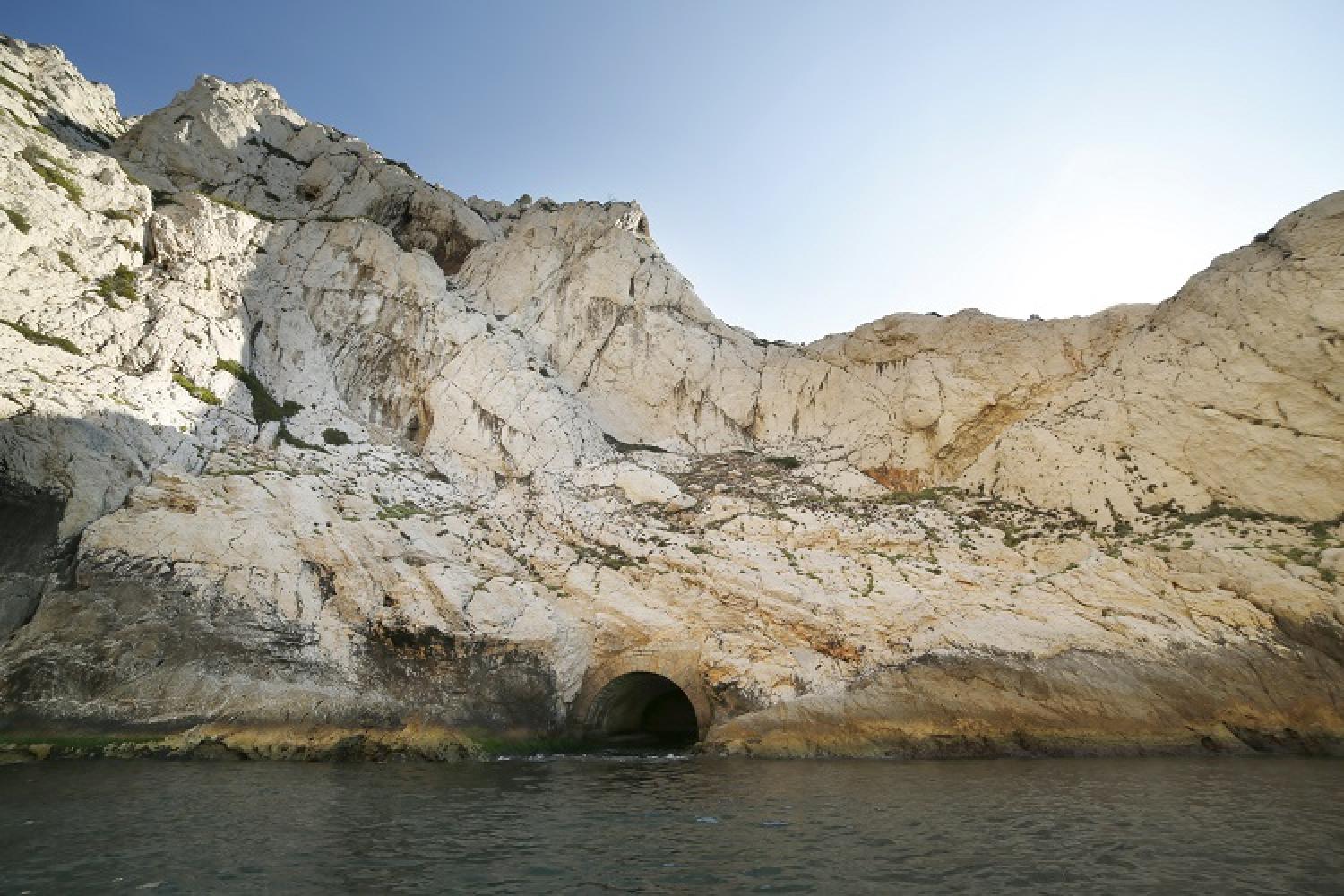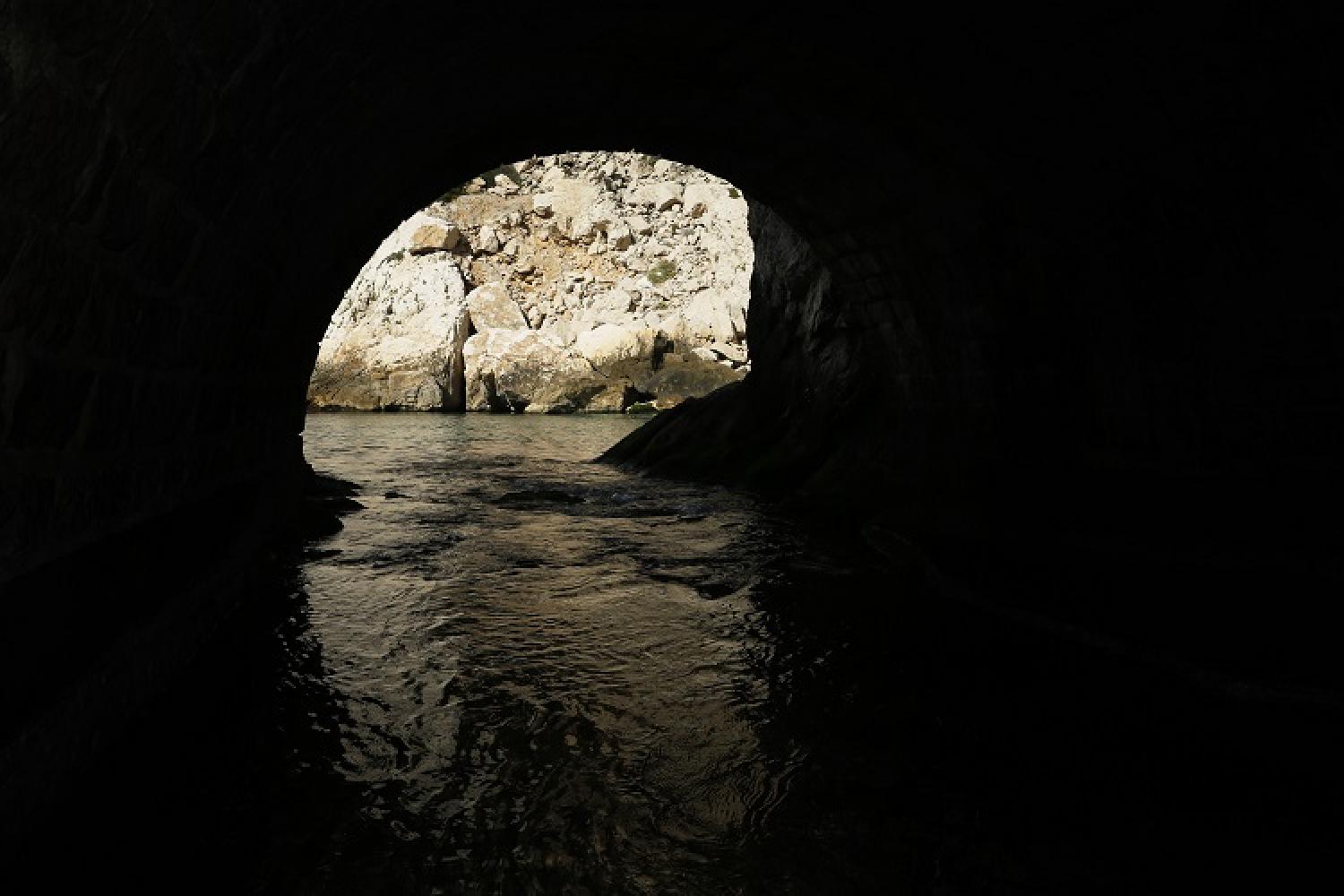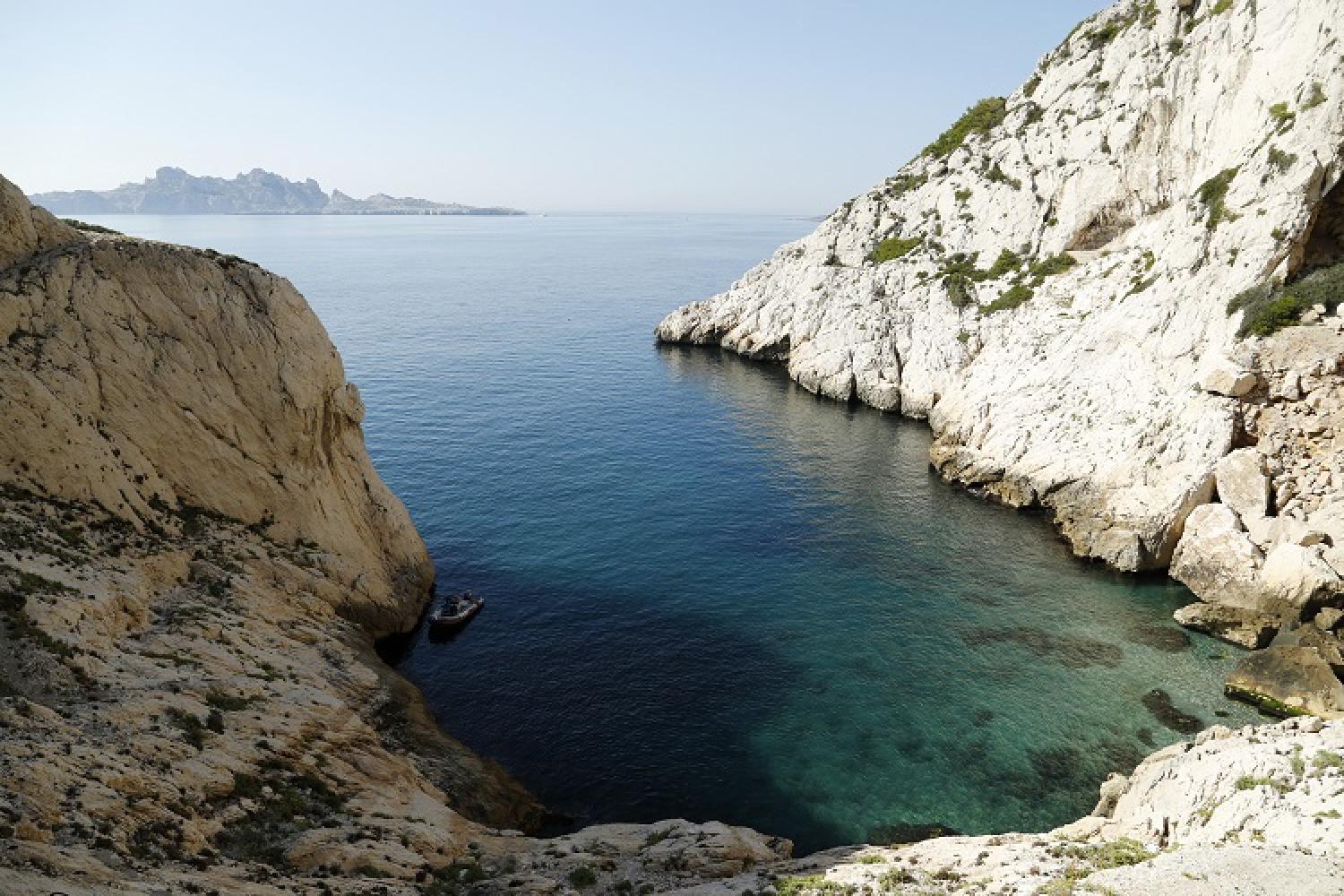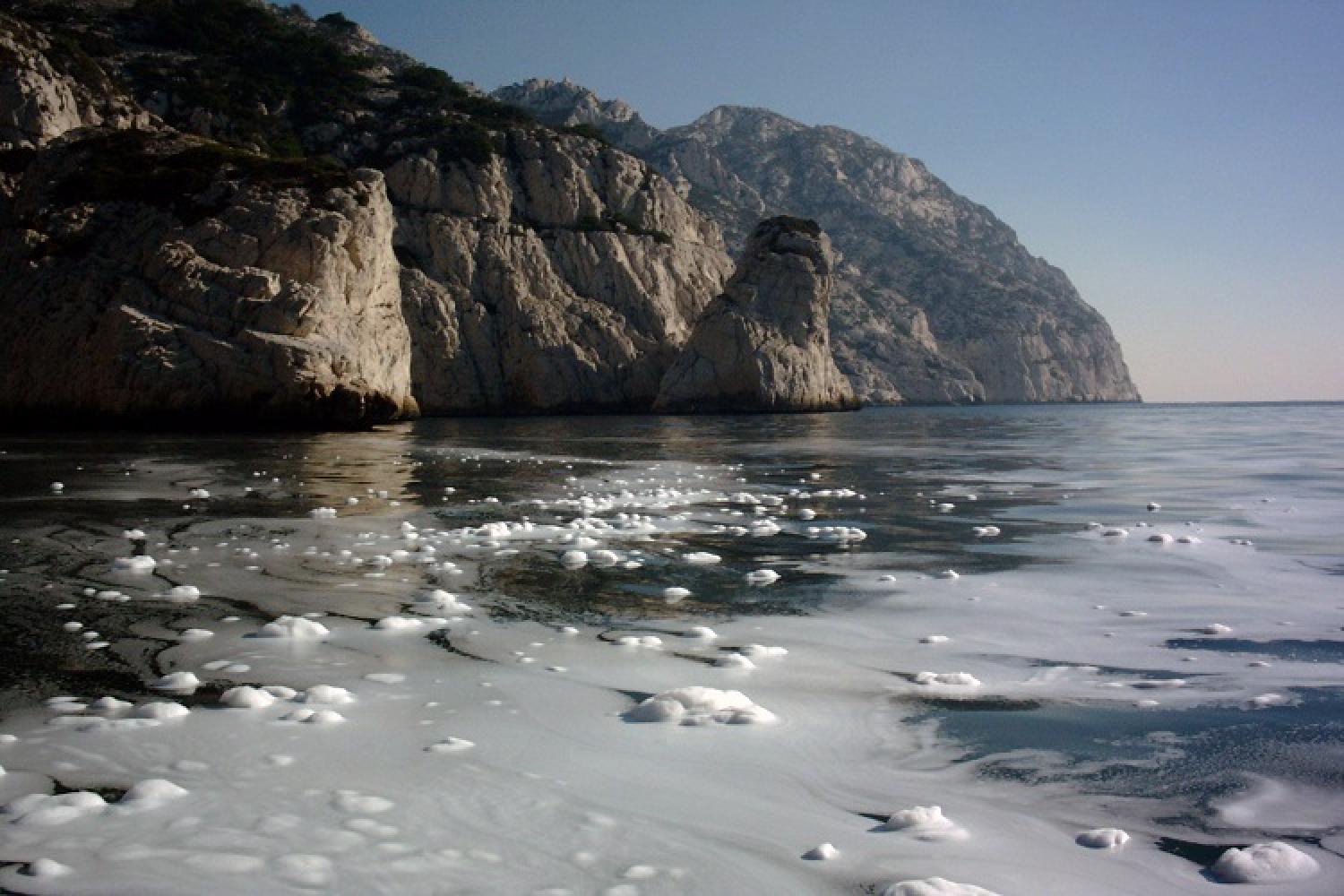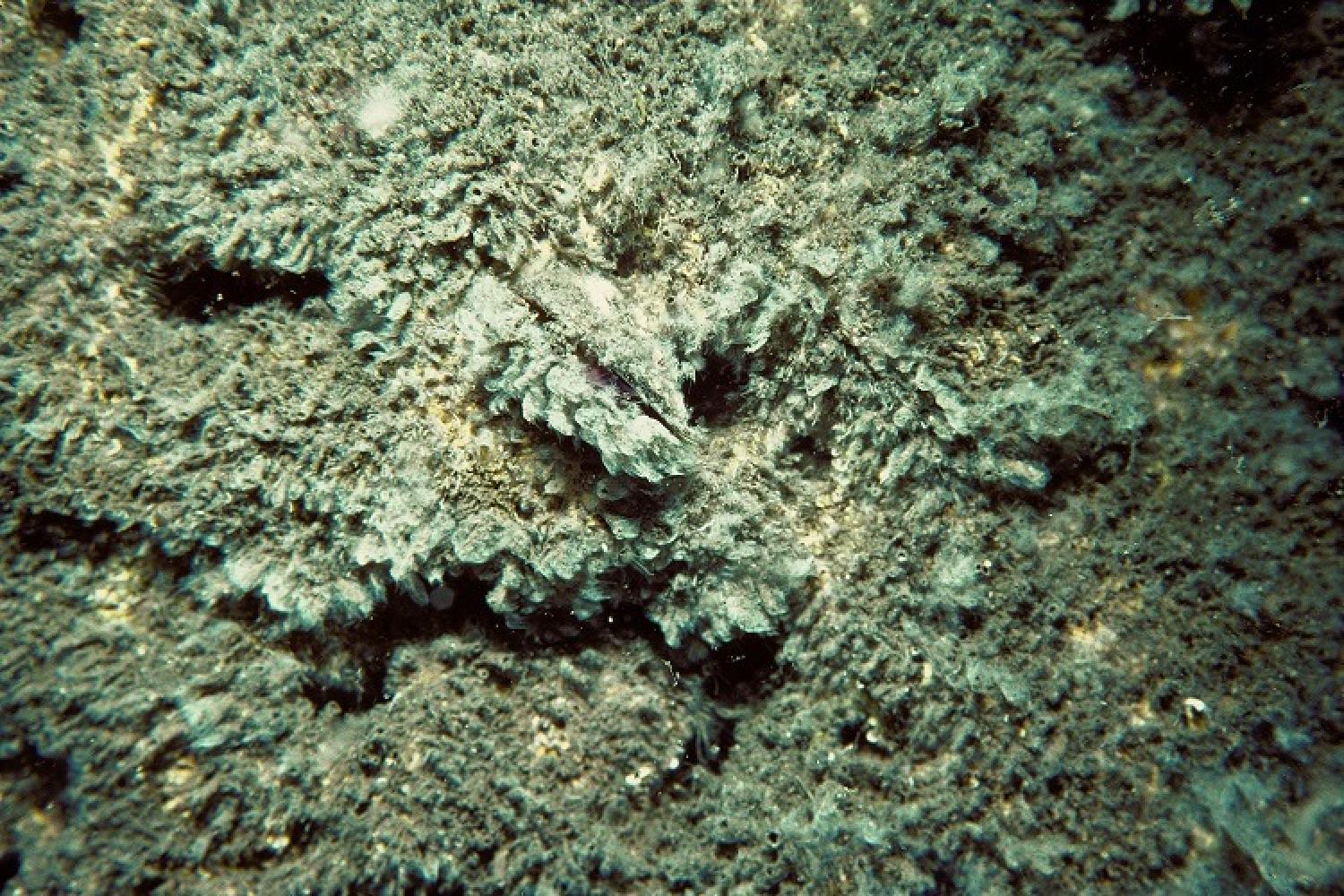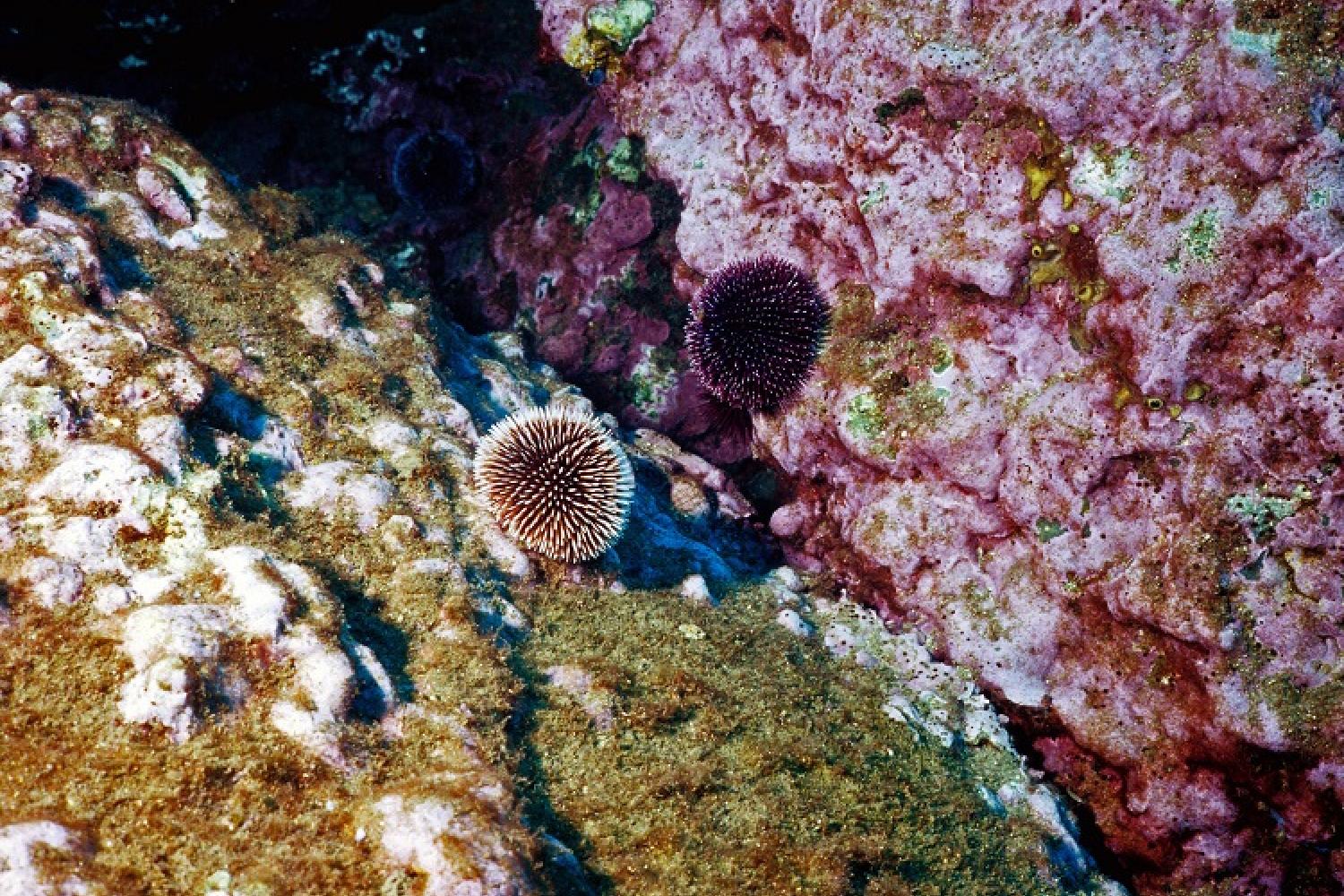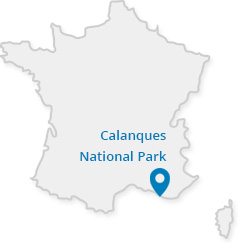The paradoxical calanque
1896: organic pollutants arrive in Cortiou
In the 19th century, epidemics of cholera, smallpox and typhoid fever ravaged Marseilles due to all the sewage running into the streets, jeopardising its future as a commercial port. The mayor, Félix Baret, decided to launch a major project to clean up the city
Between 1891 and 1896, a large combined sewer system was built: 20 basins, 192 kilometres of channels and pipes, and a 12-kilometre long outfall that discharged the wastewater produced by 400,000 inhabitants into the Cortiou inlet. At the time, it was thought that the sea was capable of absorbing unlimited amounts of waste. Moreover, the Calanque de Cortiou is beaten by strong marine currents: the pollution discharged (mainly organic matter) would therefore be rapidly diluted.
The 1960s: the first scientific findings
After the war, scientists were concerned about the impact of the discharge on the marine environment. In 1966, the biologists' results were clear: the discharge was seriously damaging the marine ecosystem, but in a relatively small area of some 800 metres radius in front of the sewer outlet. With the help of the wind, the bacterial pollution drifted towards the harbour of Marseille.
1976: new industrial pollution in Cortiou
In the early 1970s, Marseille sought to develop its seaside activities, but there is a problem: the waters of the harbour were too polluted for swimming. This pollution came from the industries that had developed in the Huveaune valley. So a second pipe was dug to divert the Huveaune River and its industrial pollution towards Cortiou. The damage to the marine environment was considerable: fauna and flora were seriously damaged up to several kilometres offshore.
The 1970s: increasing awareness
Several personalities denounced the damage caused by pollution to marine ecosystems in the Mediterranean. Scientists and film-makers such as Captain Cousteau, Nardo Vicente and Christian Pétron warned of the catastrophic situation in Cortiou, as well as in all the coastal towns that dumped their wastewater and industrial waste directly into the sea. They called for a sanitation strategy, which was launched in 1980.
1987: the clean-up begins
Marseille inaugurated its physico-chemical wastewater treatment plant, in two installations: the treatment of wastewater under the forecourt of the Velodrome stadium, and the treatment of sludge in the former quarry at la Cayolle: the discharge from Cortiou was then freed of most of its suspended solids and some of the detergents present in the wastewater.
Although the waters of the Huveaune River were not treated, the marine environment began to recover: the neptune grass meadow off Cortiou recovered and the fauna gradually returned. However, some voices called for the implementation of a biological treatment to neutralise part of the invisible pollution dissolved in the discharge, which continued to flow into the sea. The latter would not arrive until twenty years later, in 2007, following the upgrading of the treatment plant to European standards.
Cortiou today and in the future
It was in the 19th century, at a time when the notion of ecology did not exist, that Cortiou was chosen as the discharge point for Marseille's sewers. Since then, the gradual implementation of wastewater treatment has constantly improved the quality of the discharge, but there is still a long way to go. Pollution is a shared responsibility between the public administration, businesses and citizens. While collective actions have proved successful in the past, individual action by citizens and companies is now crucial to further progress.
Clear water is not necessarily pure water: there is still chemical pollution, which is more serious, more insidious, because it cannot be seen. At the bottom of the sea, the damage is considerable and will remain so for a long time.
Nardo Vicente, marine biologist, 1988
 Links
Links
Sewage disposal, in the "Revue Marseille"
Captain Cousteau speaks about the Calanque de Cortiou (video)
In reference to the large overflow conduit in Marseille (filmed lecture)
Rexcor 1 project: November 2017 - Presentation and objectives (video)
Rexcor 2 project: March 2018 - immersion of the reefs (video)
Rexcor 3 project: October 2019 - Already more than 40 species recorded (video)




